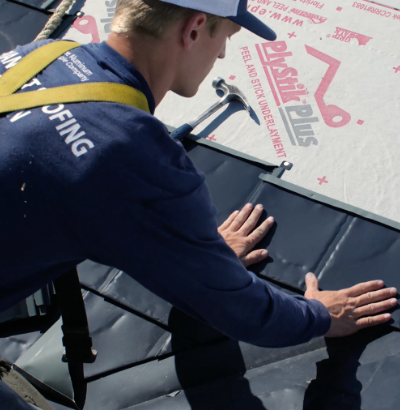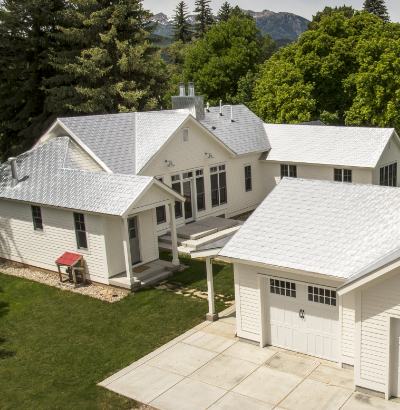HOMEOWNERS
Find an installer for your project
The best shingles require the best contractors. We work with licensed and reputable installers all around the United States. Find an installer in your area that will work with you to find the best solution for your project.
Select Your State

Choose your state to find a contractor in your area.
Show me contractors in
 East Coast Metal Roofing
East Coast Metal Roofing 1-844-611-3267
1-844-611-3267 eastcoastmetalroofing.com
eastcoastmetalroofing.com- Get a Free Quote
 East Coast Metal Roofing
East Coast Metal Roofing 1-844-611-3267
1-844-611-3267 eastcoastmetalroofing.com
eastcoastmetalroofing.com- Get a Free Quote
Frequently Asked Questions
There is little difference between metal and other materials when it comes to noise from rain or hail. The shingles lay flat on the roof deck so there is no air space to amplify the sound. Plus, normal attic insulation also absorbs most of the sound.
Yes, they lay flat so while installing the roof you will walk on the shingles.
Yes, they only weigh 40 lbs per square. The install is the same whether it is new construction or a re-roof. Always new underlayment, flashings and shingles.
No, they don’t have any effect.
Because aluminum shingles are a premium home product, you can expect your new roof to cost roughly two times what an asphalt shingle roof costs. However, your new roof will add to the resale value of your home, save you money on your energy bills, and give you peace of mind that you’ll never have to re-roof again thanks to our lifetime warranty.
Our aluminum shingles are made to look like common roofing material – such as asphalt shingle, cedar shake, or slate roofing – only stronger and more durable. With our wide variety of styles, colors and patterns – there’s certain to be a style and finish to match your home and neighborhood.
You can expect a metal roof to last at least 2 to 3 times longer than a regular roof. In general terms, count on a metal roof lasting 30 to 50+ years since metal roofs can often be repainted versus replaced.
To put it in context, the average lifespan of an asphalt roof is 12 to 20 years. That lifespan can be shorter depending on the pitch of your roof and the climate in your area. Made of oil impregnated paper or fiberglass, asphalt begins to deteriorate as soon as you expose it to normal weather. A metal roof, however, will never decompose.
Other roofing materials like wood shingle, shake and tile have varying degrees of weather-related problems that lead to breakdown. Wood shingle and shake roofs often need replacement before twenty years. Concrete tile roofs can crack and warp in the freeze/thaw cycle of more northern climates.
All of the above roofing materials are well-outlasted by metal roofing, which retains its good looks and durability decade after decade after decade.
A metal roof can withstand decades of abuse from extreme weather like high winds, heavy snow, hail storms and even wildfires. Metal roofing has a 140-mph wind rating, meaning it can withstand wind gusts up to 140 miles per hour. Under high wind conditions, says architect Rich Carroll, “Metal roofing systems have wind resistance and uplift resistance that is above the new building code requirement. That gives us a sense of relief in that we can use the best material to meet those criteria.”1
In locations that see heavy snow, metal roofing has been the choice of homeowners for years. It sheds snow fast, which protects the structural integrity of the roof.
If you live in a part of the country that is prone to wildfires, metal roofing can protect your home should burning embers land on your roof.
Not only is metal roofing great for your home, it’s great for the environment. The recycled content of the steel in a metal roof is about 28% and is completely recyclable at the end of it’s lifespan. This makes metal roofing a green building material.
According to the National Association of Homebuilders Research Center, 20 billion pounds of asphalt shingles are dumped into U.S. landfills every year. If you loaded those shingles into tractor trailers, then lined them up end-to-end, they would make a line from New York City to Los Angeles, back to New York City again, then on to Chicago.
That’s a lot of wasted asphalt. But because a metal roof can often be installed over your current roof, without tearing off what’s already there, metal roofing helps to reduce this excessive shingle waste.

